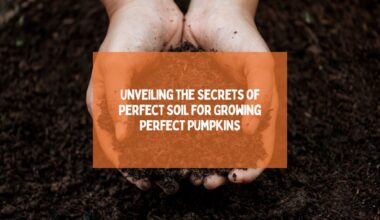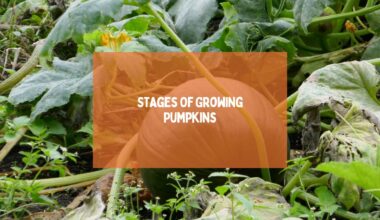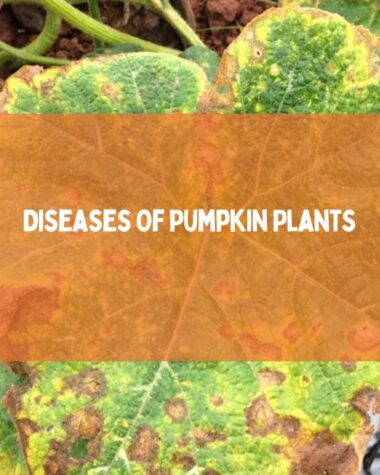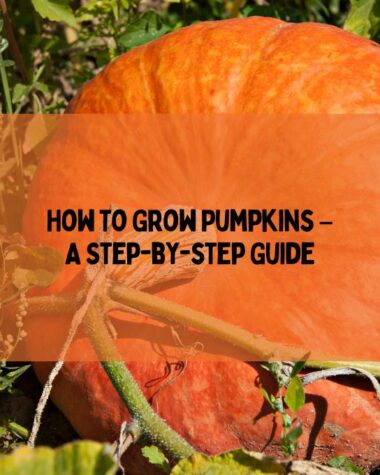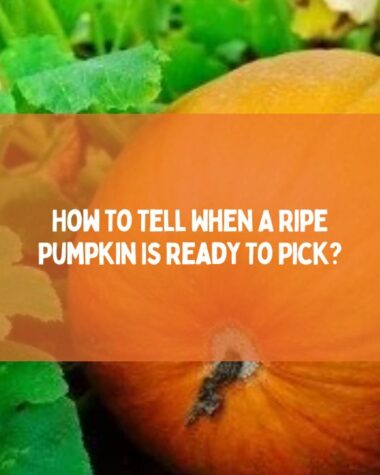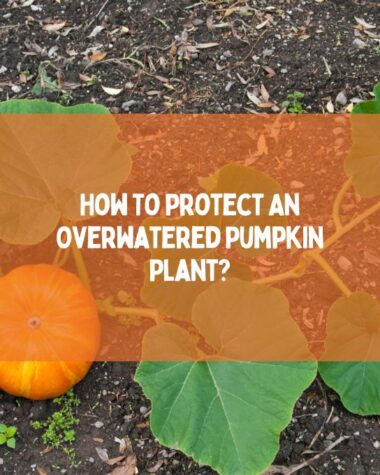Pumpkin lovers, rejoice! Growing pumpkins in grow bags is an innovative and space-saving solution to cultivating your favorite autumn squash. Whether you’re an urban gardener with limited space or simply looking for a new, convenient way to add some festive flair (and delicious produce) to your home this season, this ultimate guide has got you covered.
From handy techniques and tips to best practices ensuring a bountiful harvest, we’ll delve into every aspect of growing pumpkins in grow bags.
Let’s start.
Advantages Of Growing Pumpkins In Grow Bags

Growing pumpkins in grow bags has several advantages, including space-saving solutions, better soil quality control, and easy mobility for adjusting placement or protection from weather conditions.
Space-saving Solution
Grow bags offer an incredibly versatile and space-saving solution for pumpkin enthusiasts with limited gardening areas or who simply wish to maximize their planting options.
This alternative allows you to cultivate pumpkins on patios, balconies, or even in compact backyards without compromising on the quality of your harvest.
For instance, urban gardeners with only small concrete spaces available can create thriving pumpkin patches using these flexible containers. Instead of sprawling across the ground, grow bag pumpkins can be trained upwards around trellises or other supportive structures.
Better Soil Quality Control
When growing pumpkins in traditional gardens, it can be challenging to maintain soil quality, resulting in poor crop yields. However, when using grow bags, you have better control over your pumpkin’s soil health.
You can easily mix and add nutrients to the soil mixture without worrying about disturbing the surrounding garden bed.
Using good-quality potting mixes or making your own with appropriate amendments like perlite or vermiculite increases drainage and prevents issues like root rot that arise from excess moisture build-up that pumpkin vines do not tolerate well.
Easy To Move And Adjust
Grow bags are not only space-saving but also incredibly easy to move and adjust, making them an excellent choice for growing pumpkins. Unlike traditional gardening methods, where you’re committed to a particular spot, grow bags give you the flexibility to rearrange your garden as needed.
For example, if you notice that your pumpkin plants aren’t getting enough sunlight in their current location, it’s easy to pick up the bags and move them somewhere else that provides more direct sunlight.
In addition, this feature makes grow bags an ideal option for those who don’t have a lot of outdoor space or live in urban areas with limited access to green spaces. You can easily set up a mini pumpkin patch on a balcony or rooftop terrace by using several different-sized grow bags and moving them around to maximize sun exposure.
Related Reading:
- How To Grow Square Pumpkins?
- How To Protect An Overwatered Pumpkin Plant?
- 4 Smart Ways To Grow Tomatoes in Winter
- How To Grow Imperator Carrots?
How To Grow Pumpkins In Grow Bags? (A Step-by-Step Process)
To successfully grow pumpkins in grow bags, it’s important to choose the right size and material for your bag, prepare the soil with fertilizers rich in nitrogen and potassium, plant seeds or seedlings 1-2 inches deep while ensuring adequate spacing, water frequently but avoid over-watering or letting water accumulate at the bottom of the bag.
Also, support vines with trellises or stakes as they start to climb upwards and become heavy with fruit.
Choosing The Right Grow Bag Size And Material
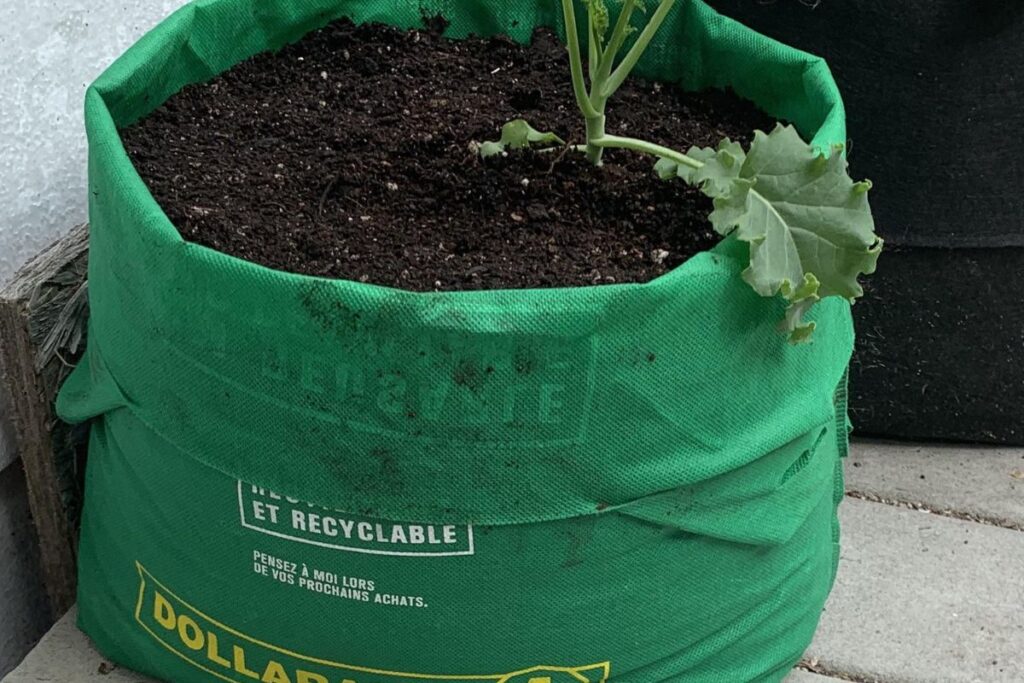
The first step in growing pumpkins in grow bags is choosing the right size and material for your needs. The most popular choice of material for grow bags is fabric because of its durability, breathability, and ability to provide adequate drainage.
It’s important to consider the size of the bag you choose as it will determine how many pumpkin plants you can grow per bag. Keep in mind that larger bags offer more space for root growth, which translates into healthier plants and bigger pumpkins.
For example, a 10-gallon smart pot could accommodate up to two pumpkin seedlings, while a 20-gallon pot could handle up to four seedlings comfortably.
Preparing The Soil And Fertilizing
To ensure a healthy and bountiful pumpkin harvest, it’s crucial to prepare the soil and fertilize your grow bags properly. Here are some tips:
- Choose high-quality soil that’s rich in organic matter and nutrients. Mix in coconut coir or peat moss to improve aeration and water retention.
- Add compost or well-rotted manure to enrich the soil with nitrogen, phosphorus, and potassium – vital nutrients for pumpkin plants.
- Consider using slow-release fertilizers, such as bone meal or blood meal, which provide sustained nutrition without overfeeding your pumpkins.
- Before planting, use a garden fork or trowel to loosen the soil and remove any debris or rocks that could hinder root growth.
- Mix in a balanced fertilizer (10-10-10) at the recommended rate for your grow bag size. Be sure not to over-fertilize, which can stunt growth or burn the roots.
- After planting, add a layer of organic mulch (such as straw or shredded leaves) around the base of each plant to help retain moisture and suppress weeds.
By following these steps, you’ll create an ideal growing environment for your pumpkins and set yourself up for success come harvest time!
Planting And Spacing
To ensure healthy and robust pumpkin growth, it is essential to plant and space your pumpkin seeds properly. Here are some tips to follow:
- Choose a suitable grow bag size based on the number of pumpkins you plan to grow.
- Fill the grow bag with a nutrient-rich soil mixture, leaving an inch or two at the top for watering purposes.
- Plant one or two pumpkin seeds in each grow bag, placing them about an inch deep into the soil.
- Place the grow bags in a sunny location that receives at least six hours of direct sunlight each day.
- Water the seeds immediately after planting, making sure not to overwater them as this could lead to rotting or mold growth.
- Once the seedlings emerge, thin out weaker seedlings so that only one strong seedling remains.
- Space out your remaining plants evenly, leaving approximately three feet between each plant for ample room to spread their vines.
Following these steps will help ensure optimal growing conditions for your pumpkins and increase your chances of harvesting full-sized, healthy pumpkins.
Watering And Feeding
To ensure healthy growth and a bountiful harvest, watering and feeding your pumpkin plants is crucial. Here are some tips:
- Water your pumpkins deeply but not too frequently, aiming for 1-2 inches of water per week.
- Make sure your grow bags have adequate drainage to prevent waterlogging.
- Use a high-quality organic fertilizer or compost to provide essential nutrients.
- Avoid over-fertilizing, which can cause excessive vine growth at the expense of fruit production.
- Mulch around the base of your plants to retain moisture and prevent weeds from competing for nutrients.
Monitor your plants closely for signs of nutrient deficiencies, such as yellowing leaves, and adjust your fertilization regimen accordingly.
Supporting And Training
To ensure your pumpkin plants grow healthy and strong, proper support and training are essential. Here are some tips:
- Use stakes or trellises – Depending on the variety of pumpkins, using stakes or a trellis can provide much-needed support for the plant as it grows. This will help prevent the stems from breaking under the weight of the developing fruit.
- Train vines – As pumpkin vines grow, train them to grow towards their support structure so they can climb up it. When they reach a main stem, gently wrap them around it or tie them in place to encourage upward growth.
- Prune selectively – If necessary, prune back any excess leaves or shoots that may be blocking sunlight from reaching lower branches or fruits that are already forming.
- Monitor for disease – Look out for powdery mildew or other diseases that can affect pumpkin plants. Remove and dispose of any affected foliage immediately to prevent further spread.
By providing adequate support and training, you can ensure that your pumpkins will thrive and produce bountiful harvests.
Related Reading:
- How To Care For Pumpkin Plants?
- Golden Zucchini Squash: A Nutritious Summer Vegetable
- 5 Most Common Tomato Stem Problems: And How to Fix Them
How to Manage Pumpkin Pests And Disease in Grow Bags?
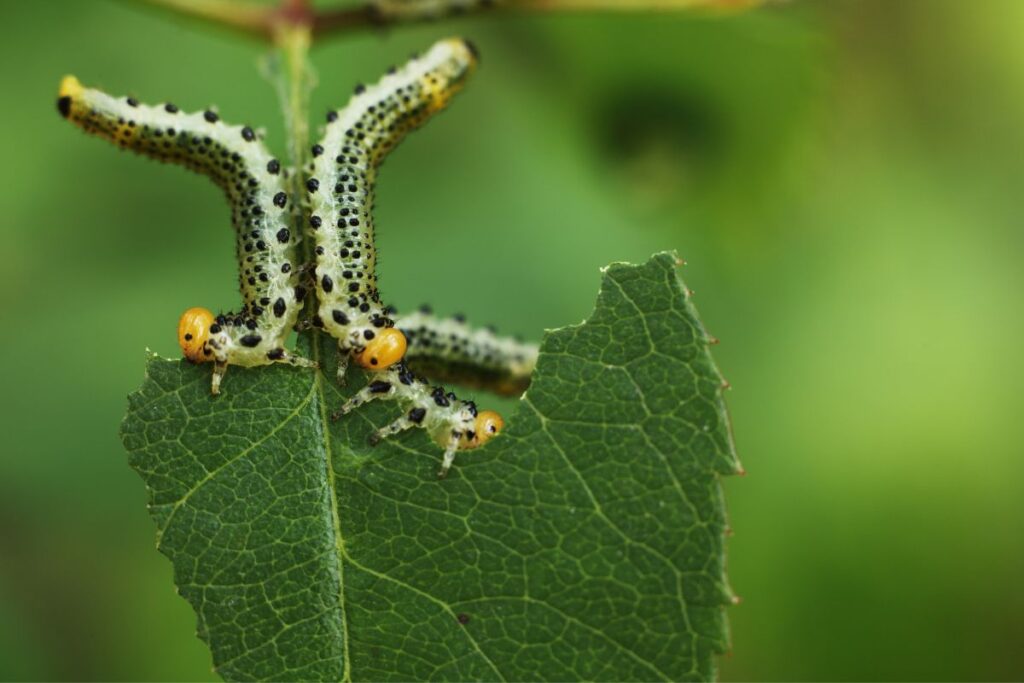
One of the biggest challenges in growing pumpkins in grow bags is managing pests and diseases. Here are some tips on how to prevent and treat common issues:
Preventative measures
- Use clean soil to avoid introducing pests or diseases to your grow bags
- Keep the area around your grow bags free of debris, weeds, and other potential sources of disease
- Choose disease-resistant pumpkin varieties whenever possible
- Use natural pest repellents such as neem oil or garlic spray
Common pumpkin pests
- Aphids: Spray plants with a strong stream of water or use insecticidal soap
- Squash bugs: Handpick bugs off plants or use row covers
- Spider mites: Spray plants with water frequently
- Whiteflies: Use yellow sticky traps or release beneficial insects like ladybugs
Common pumpkin diseases
- Powdery mildew: Ensure adequate air circulation by spacing plants out and removing affected leaves
- Downy mildew: Try using copper-based fungicides or remove infected leaves
- Root rot: Avoid overwatering and ensure proper drainage
Regular plant maintenance:
- Check your plants regularly for signs of pest or disease issues
- Remove any diseased plant material promptly
- Water and fertilize appropriately to ensure healthy pumpkins
Remember, prevention is key when it comes to managing pests and diseases in your grow bag pumpkin garden. Keep a watchful eye on your plants, maintain good plant health, and treat issues as soon as they arise.
Best Practices For Growing Pumpkins In Grow Bags
To ensure your pumpkin-growing success, it’s crucial to follow best practices such as selecting the right pumpkin variety, providing enough sunlight and warmth, harvesting at the right time, and properly storing harvested pumpkins.
Selecting The Right Pumpkin Variety
It’s essential to choose the right pumpkin variety when growing in grow bags. There are several types of pumpkins available, including Mini Pumpkins, Halloween Pumpkins, and Giant Pumpkins.
On the other hand, if you want to go big with your pumpkins and have enough space for them to spread out their vines, choose large varieties such as Atlantic Giants or Dill’s Atlantic Giant.
Another factor to consider while selecting the right pumpkin variety is your climate zone. Some varieties are better suited for cooler climates than others.
In summary; choosing the right pumpkin variety depends on your space availability and location conditions while considering factors such as size and growth period.
Providing Enough Sunlight And Warmth
Pumpkins thrive in warm and sunny environments, making it essential to provide them with ample sunlight and warmth. Choose a location that gets at least six hours of direct sunlight per day, preferably facing south for maximum exposure.
It’s also crucial to monitor the soil temperature regularly using a thermometer, as pumpkins prefer warm soil to grow well. Keep in mind that during the early stages of growth, pumpkins need more warmth than they will need later when they are establishing their vines.
You can use heat mats or even place your grow bags on top of asphalt pavement since the black color absorbs heat quickly.
Harvesting at the Right Time
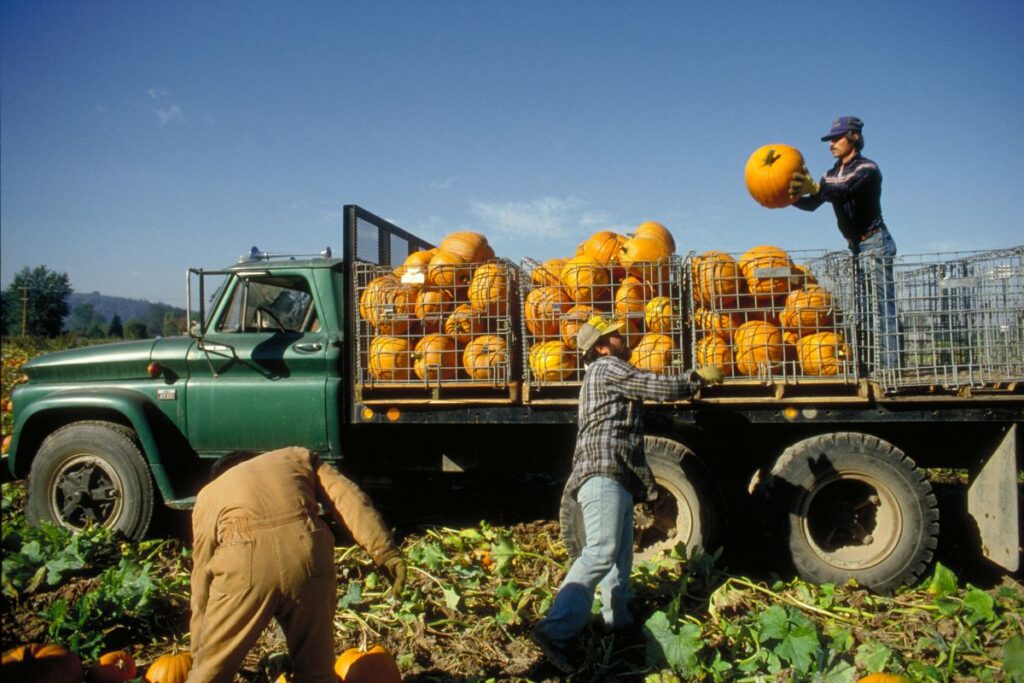
Knowing when to harvest your pumpkins is crucial to achieving the best quality and taste. Pumpkins are usually ready for harvest between 75-120 days after planting, depending on the variety.
One way to tell if they’re ready is by their color – a mature pumpkin will have a deep, uniform color and hard skin that resists puncture.
It’s important not to wait too long to harvest, as overripe pumpkins can start to decay or lose flavor. Also, handle them carefully during harvesting and transportation, as any damage can cause them to rot faster in storage.
Once harvested, you can store your pumpkins in a cool area with good ventilation at around 50-55°F for up to two months.
Properly Storing The Harvested Pumpkins
After harvesting your pumpkins, it’s important to store them properly to keep them fresh and tasty for as long as possible. First, make sure the skin of the pumpkin is dry before storing it in a cool, dry place with good ventilation.
Another option for storage is to cure your pumpkins by placing them in a warm, sunny spot for 10-14 days. This allows the skin to harden and any small cuts or bruises to heal, which will help prevent rot during storage.
Properly stored pumpkins make great ingredients for soups, pies, and other seasonal dishes throughout the fall and winter!
Related Reading:
- How To Grow Lemon Cucumber Plant In Your Vegetable Garden?
- How to Grow Cucumbers From a Cucumber?
- How To Tell When A Ripe Pumpkin Is Ready To Pick?
Common Mistakes To Avoid When Growing Pumpkins In Grow Bags

Avoid overcrowding your pumpkin grow bags, as this can lead to stunted growth and poor fruit development. Also, be sure not to over or under-water your pumpkins, as both can cause damage to the plants and hinder their growth potential.
Overcrowding
Overcrowding is a common mistake many gardeners make when growing pumpkins in grow bags. It’s essential to give each plant enough space to develop and produce healthy fruits.
To avoid overcrowding in your pumpkin grow bags, it’s crucial to follow the planting instructions on the seed packet or nursery tag carefully. Most pumpkin varieties need at least three feet spacing between plants for optimal growth.
It can be tempting to squeeze additional plants into a limited amount of space, but this will only harm the overall crop yield. Plan accordingly by choosing appropriate size containers for your pumpkins and not exceeding the recommended number of plants per container.
Over Or Underwatering
One common mistake many pumpkin growers make is over or under-watering their plants. It’s essential to provide the right amount of water, especially during hot and dry weather conditions.
To avoid these issues, it’s crucial to monitor the soil moisture regularly using a moisture meter or by sticking your finger into the soil. Water your pumpkin plants deeply once or twice a week depending on how fast the soil dries.
Remember that pumpkin plants need consistent moisture throughout their growing cycle, but not too much as this would cause issues with their growth pattern.
Poor Drainage
One of the most important factors to consider when growing pumpkins in grow bags is drainage. Poor drainage can lead to waterlogging, suffocating, and killing pumpkin roots.
To avoid this issue, it’s vital to select grow bags with adequate drainage holes or slits and ensure that excess water can easily escape.
An example of poor drainage leading to stunted growth is when your pumpkin seedlings appear weak and lack vigor despite regular watering. In such cases, you may need to modify the soil structure by adding perlite, vermiculite, or sand to enhance aeration around plant roots.
Neglecting Regular Maintenance
To ensure the success of your pumpkin growing in grow bags, it’s important to take good care of your plants. One common mistake that gardeners make is neglecting regular maintenance.
This can lead to a host of issues, such as overcrowding and poor drainage.
In addition to pruning and monitoring for pests, you’ll also need to keep up with watering and fertilizing your pumpkin plants. Make sure they’re getting enough water without becoming waterlogged, typically once a week, depending on weather conditions.
For fertilization, opt for an all-purpose organic fertilizer every few weeks during the growing season.
Conclusion
In conclusion, growing pumpkins in grow bags is an excellent solution for those who want to enjoy the delights of autumn without having to worry about space. With these tips, techniques, and best practices we’ve provided here, you can successfully cultivate your own pumpkin harvest with ease.
Remember that proper soil preparation and fertilization are key factors in ensuring healthy plant growth throughout the season. Be sure to choose the right variety of pumpkins based on your preferences and climate conditions.
Don’t forget regular maintenance such as watering, supporting and training vines, pest control measures, etc., for a bountiful harvest.
